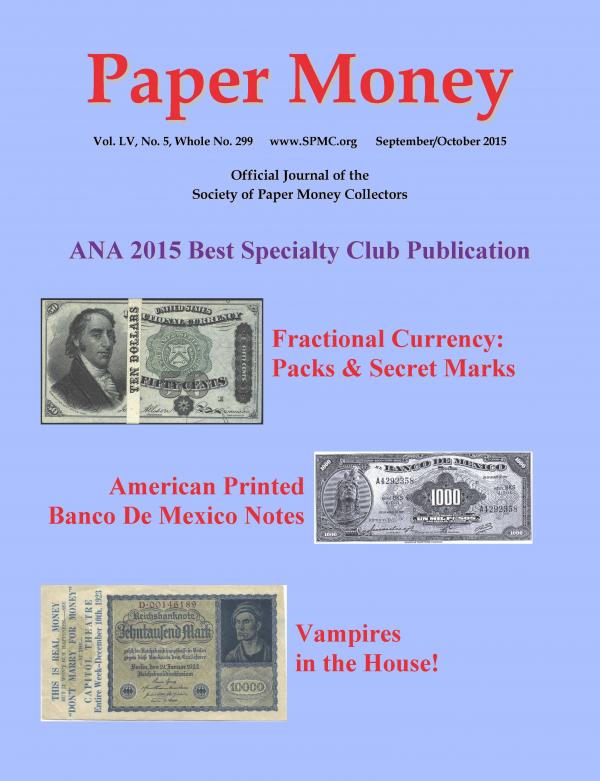Please sign up as a member or login to view and search this journal.

Table of Contents
The Enduring Allure of $5 Micro Back Plates 629/637--Peter Huntoon 304
Original Banded Fractional Packs--Rick Melamed 328
The Small-Size American Printed Notes of Banco de Mexico--Chamblis 334
Uncoupled--Joe Bolin & Fred Schwan 345
ANA Awards 352
Money & The Artist--Terry Bryan 353
Secret Marks on Fourth Issue Fractional Notes--Dave Treter 357
Misplaced 1928 $50 KC Star Notes--Jamie Yakes 362
1922 German 10,000 Mark Note: The Vampire Note--Pam & Dave Stitely 366
Chump Change--Loren Gatch 369
Obsolete Corner--Robert gill 370
Tweet
More like this
- Paper Money- Vol. LVI, No. 5- Whole No. 311- September/October 2017
- Paper Money- Vol. LV, No. 5- Whole No. 305- September/October 2016
- Paper Money- Vol. LVII, No. 5- Whole No. 317- September/October 2018
- Paper Money- Vol. LIII, No. 5- Whole No. 293- September-October 2014
- Paper Money- Vol. XIV, No. 5- Whole No. 59- September- October 1975

